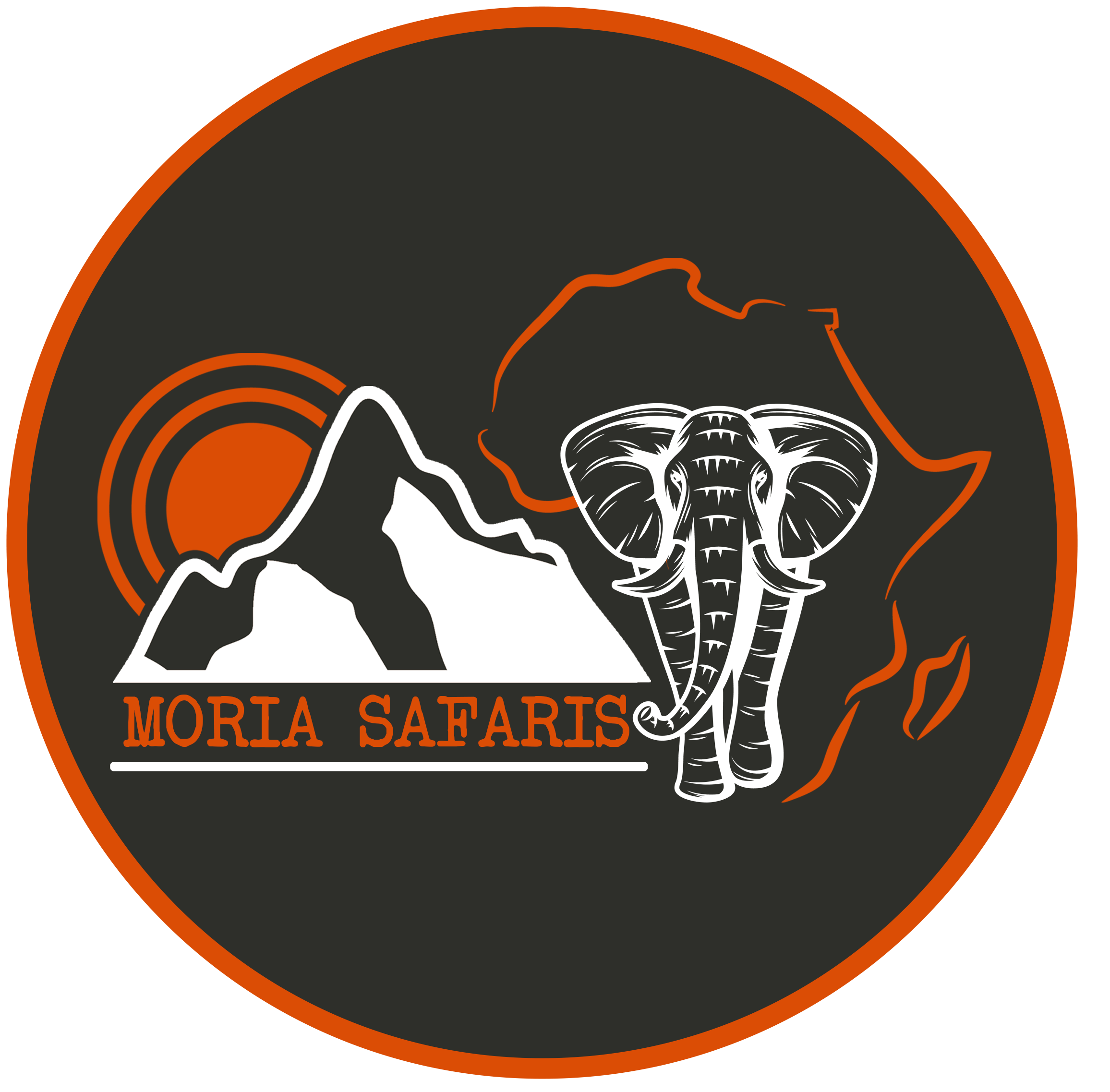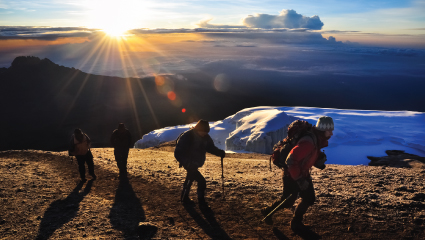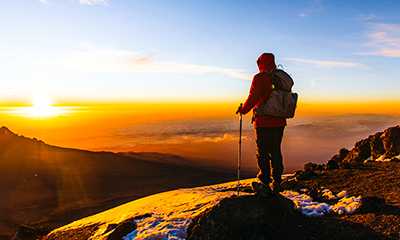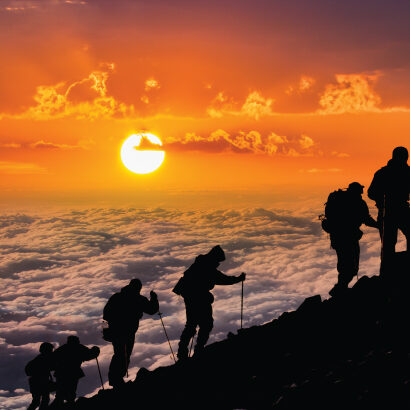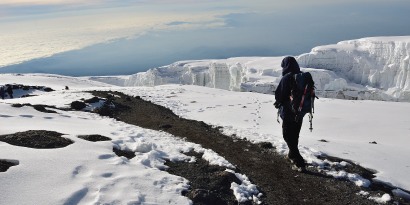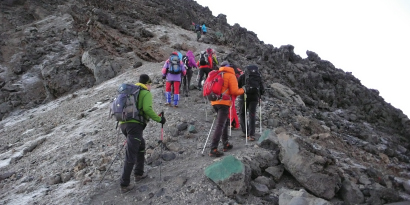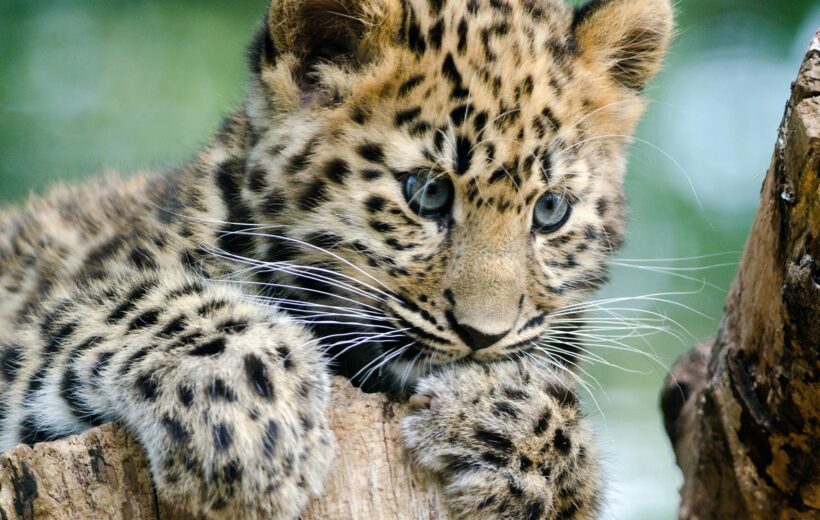ol doinyo lengai
Ol doinyo Lengai
Ol Doinyo Lengai, located in Tanzania, is an active stratovolcano situated in the East African Rift within the volcanic region of the Gregory Rift. Also known as the "Mountain of God" in the Maasai language, Ol Doinyo Lengai holds cultural and geological significance and offers a unique destination for adventurous travelers and geology enthusiasts.
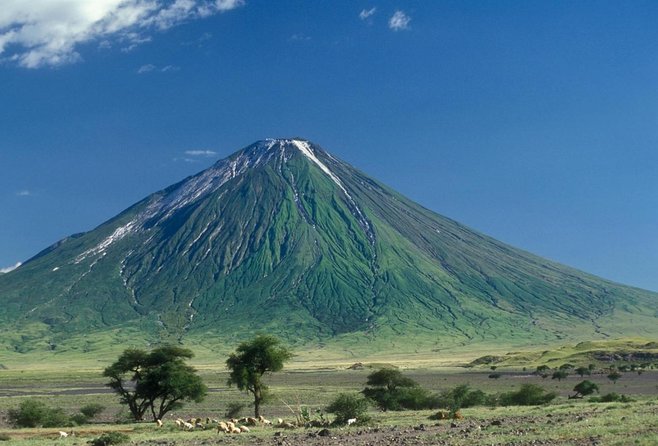
Key features of Ol doinyo Lengai
-
-
-
Geological Significance: Ol Doinyo Lengai is the only active volcano in the world that erupts natrocarbonatite lava, which is unique due to its low-temperature and low-viscosity composition. The lava is black in color but quickly turns white upon exposure to air due to its unique chemical composition.
-
Stratovolcano Characteristics: The volcano stands at an elevation of approximately 9,816 feet (2,986 meters) and features a distinctive cone-shaped structure. Its slopes are steep and rugged, and the ascent involves loose ash and volcanic scree, making it a challenging climb.
-
Climbing Ol Doinyo Lengai: Climbing Ol Doinyo Lengai is an adventurous endeavor that requires physical fitness and endurance. The trek to the summit typically takes around 5-7 hours and involves navigating steep terrain. Although the climb does not require technical climbing skills, it can be physically demanding due to loose volcanic ash.
-
Spectacular Views: The summit of Ol Doinyo Lengai offers panoramic views of the surrounding landscapes, including the vast expanse of the East African Rift, Lake Natron, and the distant Mount Kilimanjaro on clear days.
-
Cultural Significance: The volcano holds cultural significance for the Maasai people, who consider it a sacred site. According to Maasai beliefs, Ol Doinyo Lengai is the home of their deity, Engai, and is an integral part of their spiritual beliefs and rituals.
-
Volcanic Activity: Ol Doinyo Lengai is an active volcano with periodic eruptions. The volcano's unique lava composition results in cooler eruptions compared to most other volcanoes, allowing visitors to witness the incredible phenomenon of natrocarbonatite lava flows.
-
Challenges and Considerations: Climbing Ol Doinyo Lengai can be physically demanding due to the loose ash, steep slopes, and altitude. Proper preparation, including adequate hydration, physical fitness, and appropriate gear, is essential for a safe and enjoyable climb.
Due to its unique geological properties, cultural significance, and challenging ascent, Ol Doinyo Lengai attracts adventurous travelers, geologists, and individuals interested in experiencing the raw beauty of an active volcano. Visitors should consider consulting with experienced guides or tour operators familiar with the region before attempting the climb to ensure a safe and rewarding experience.
-
-
Best Time to Visit
- Overview
- Things To Do
- Things to Consider
- Cultural Experiences
- Different Exercise For Ol doinyo Lengai
The best time to visit Ol Doinyo Lengai, the active volcano in Tanzania, depends on weather conditions and personal preferences for trekking. Here are considerations for the best times to visit:
-
Dry Season: Generally, the dry season, spanning from June to October, is considered the best time to visit Ol Doinyo Lengai. During this period, the weather is drier, offering more stable conditions for trekking and climbing the volcano.
-
Avoiding Rainy Seasons: The rainy seasons, which occur from March to May and November to December, might make trekking more challenging due to increased rainfall, muddy trails, and potential slippery conditions. Rainfall during these times might hinder accessibility to the volcano.
-
Weather Conditions: The temperatures around Ol Doinyo Lengai can vary, with daytime temperatures often being hot and the nights cooler. Choosing a time when the weather is relatively mild and less humid can provide a more comfortable trekking experience.
-
Volcanic Activity: Considering the volcanic activity at Ol Doinyo Lengai, some visitors might prefer to visit during periods of heightened activity to witness the unique natrocarbonatite lava eruptions. However, these eruptions can occur sporadically and may not always align with your travel plans.
-
Personal Preferences: It’s important to consider personal preferences regarding weather, crowd levels, and other factors. If you prefer fewer crowds and quieter trekking experiences, visiting during the shoulder seasons (just before or after the high tourist season) might be preferable.
-
Safety and Accessibility: Always prioritize safety when planning your visit. Ensure that the chosen time aligns with safe trekking conditions and accessibility to the volcano.
-
Consulting Guides or Tour Operators: Consulting with experienced guides or tour operators who specialize in treks to Ol Doinyo Lengai can provide valuable insights into the best times to visit based on current conditions and volcanic activity.
Ultimately, the best time to visit Ol Doinyo Lengai depends on a combination of factors, including weather, personal preferences, safety considerations, and the desire to witness volcanic activity. It’s advisable to plan your visit well in advance and gather information from reliable sources to ensure a rewarding and safe experience when visiting this unique volcanic site
Oldoinyo Lengai is a stratovolcano located in Tanzania, known for its unique active carbonatite eruptions. While it’s primarily a destination for experienced hikers and adventurers due to its challenging terrain, there are several things you can do in and around Oldoinyo Lengai:
-
Climb the Volcano: Ascend Oldoinyo Lengai to witness its unique landscapes and stunning views. It’s a challenging hike that requires physical fitness and the guidance of experienced guides.
-
Photography: Capture the picturesque landscapes, the unique terrain, and the surrounding area. The sunrise or sunset from the volcano can be especially breathtaking.
-
Cultural Interaction: Engage with the Maasai people who live in the region. Learn about their traditions, culture, and way of life. Some tours offer opportunities to visit Maasai villages.
-
Nature Exploration: Explore the diverse flora and fauna around the volcano. While the terrain can be harsh, it supports a variety of wildlife and unique plants.
-
Stargazing: Experience the stunning night sky away from city lights. The clear skies around the volcano offer a fantastic opportunity for stargazing.
-
Visit Nearby Attractions: Explore nearby attractions like Lake Natron, known for its flamingos and beautiful landscapes. The Engare Sero footprints, believed to be the earliest footprints of Homo sapiens, are also nearby.
-
Guided Tours and Safaris: Consider joining guided tours or safaris that include Oldoinyo Lengai as part of their itinerary. This allows for a more organized and informative experience.
-
Adventure Activities: Depending on tour operators and local offerings, activities like camping, trekking, and wildlife safaris might be available in the region.
Remember, due to the volcanic nature and challenging terrain, it’s crucial to plan such a trip with experienced guides and appropriate equipment. Always prioritize safety and respect the local customs and environment while exploring Oldoinyo Lengai and its surroundings.
When planning a trip to Oldoinyo Lengai, there are several important considerations to keep in mind to ensure a safe and enjoyable experience:
-
Physical Fitness: Climbing Oldoinyo Lengai is a challenging hike. It’s essential to be in good physical condition to endure the steep and rugged terrain.
-
Local Guides: Engage experienced local guides familiar with the area. They can provide necessary guidance, safety measures, and insights into the region’s culture and environment.
-
Weather Conditions: Check weather forecasts before the trip. The climate around the volcano can be harsh and unpredictable, so it’s crucial to be prepared for varying conditions.
-
Packing Essentials: Pack appropriate gear, including sturdy hiking boots, adequate clothing for both warm and cold conditions, sunscreen, a hat, plenty of water, snacks, a first-aid kit, and any other necessities for hiking in rough terrain.
-
Permits and Permissions: Obtain any necessary permits or permissions required for hiking or visiting the area. Check with local authorities or tour operators to ensure compliance with regulations.
-
Safety Measures: Follow safety instructions provided by guides and adhere to any warnings or advice regarding volcanic activity or potential hazards in the area.
-
Cultural Sensitivity: Respect the local culture and customs of the Maasai people and other communities in the region. Seek permission before taking photographs or engaging with locals.
-
Leave No Trace: Practice responsible tourism by leaving no trace of your visit. Carry out all trash and avoid disturbing the natural environment.
-
Health Precautions: Consult a healthcare professional before the trip and take necessary vaccinations or medications recommended for travel to Tanzania.
-
Emergency Plans: Have contingency plans in place in case of emergencies. Be aware of evacuation procedures and have emergency contacts readily available.
-
Altitude Consideration: While not extremely high, Oldoinyo Lengai’s altitude can still affect some individuals. Take precautions if you’re sensitive to altitude and ascend gradually.
-
Local Customs and Etiquette: Learn about local customs and etiquettes to ensure you behave respectfully and appropriately while interacting with the locals.
By considering these aspects before your journey to Oldoinyo Lengai, you can better prepare yourself for the challenges and ensure a more rewarding and safe experience in this unique volcanic region.
Experiencing the culture around Oldoinyo Lengai involves engaging with the Maasai people who inhabit the surrounding areas. The Maasai are known for their rich cultural heritage, traditional lifestyle, and distinct customs. Here are some cultural experiences you might encounter:
-
Visiting Maasai Villages: Take the opportunity to visit a Maasai village to gain insights into their daily life, traditions, and customs. You may witness traditional dances, learn about their ceremonies, and observe their unique way of life.
-
Interacting with the Maasai: Engage in conversations with the Maasai people. Learn about their history, beliefs, and traditions. Respect their customs and etiquettes while interacting with them.
-
Traditional Clothing and Adornments: The Maasai are known for their colorful clothing and intricate beadwork. Learn about the significance of the different attire and jewelry they wear, as each piece often holds cultural importance and represents different aspects of their identity.
-
Cultural Ceremonies and Rituals: If you’re fortunate, you might witness or participate in cultural ceremonies such as weddings, rites of passage, or celebrations that are important to the Maasai community.
-
Livelihood and Pastoral Lifestyle: Understand the Maasai’s pastoral way of life by learning about their cattle herding practices, understanding their connection to their livestock, and how they sustain their communities through these practices.
-
Cultural Exchange: Share your own culture with the Maasai people. It can be a mutually enriching experience to exchange stories, music, and aspects of your own background while learning about theirs.
-
Support Local Artisans: Purchase authentic Maasai crafts directly from local artisans. This not only supports the community economically but also allows you to take home a piece of their culture as a souvenir.
-
Respecting Traditions: While engaging in cultural experiences, respect their customs, beliefs, and way of life. Seek permission before taking photographs, ask questions respectfully, and follow any guidelines given by your hosts or guides.
The cultural experience around Oldoinyo Lengai offers a unique opportunity to immerse yourself in the traditional lifestyle and customs of the Maasai people, providing a deeper understanding and appreciation of their rich heritage.
Preparing for a challenging climb like Oldoinyo Lengai requires physical fitness, endurance, and specific training to navigate the rugged terrain. Here are several exercises and training methods that can help prepare your body for the climb:
-
Cardiovascular Training: Improve your cardiovascular endurance through activities like hiking, running, cycling, or using a stair climber. This helps condition your heart and lungs for the demands of hiking at higher altitudes.
-
Strength Training: Focus on building leg strength, core stability, and upper body strength. Exercises such as squats, lunges, calf raises, and deadlifts can strengthen leg muscles essential for uphill climbing. Incorporate core exercises like planks and Russian twists for stability.
-
Hiking and Stair Climbing: Train specifically for hiking by practicing on hills, stairs, or inclines. Gradually increase the intensity and duration of your hikes to simulate the conditions you’ll face on Oldoinyo Lengai.
-
Balance and Stability Exercises: Improve balance and stability, crucial for navigating uneven and rocky terrain. Exercises like single-leg squats, balance board exercises, and yoga poses can enhance proprioception and stability.
-
Endurance Workouts: Perform longer duration workouts to build endurance. Consider longer hikes or multiple-day treks to simulate the sustained effort required during the climb.
-
Altitude Simulation: If possible, try to train at higher altitudes to acclimatize your body to reduced oxygen levels. This can include hikes at moderate altitudes or using altitude-simulating equipment if available.
-
Interval Training: Incorporate interval training into your workouts. Alternating between periods of high intensity and rest can improve your body’s ability to handle the exertion of uphill climbing.
-
Flexibility and Stretching: Maintain flexibility through regular stretching and yoga. Focus on stretching the lower body muscles, such as calves, hamstrings, quadriceps, and hip flexors, to prevent injuries and improve mobility.
-
Hydration and Nutrition: Practice proper hydration and nutrition to support your training regimen. Stay hydrated and consume a balanced diet with sufficient carbohydrates, proteins, and healthy fats.
-
Rest and Recovery: Allow adequate time for rest and recovery between workouts to prevent overtraining and ensure your body has time to repair and strengthen.
Remember to gradually increase the intensity and duration of your workouts to prevent injuries. Tailor your training program to match the specific demands of hiking a volcano like Oldoinyo Lengai, focusing on endurance, strength, and stability to better prepare yourself for the climb. Consulting with a fitness professional or a hiking guide can also help create a personalized training plan suited to your fitness level and goals
